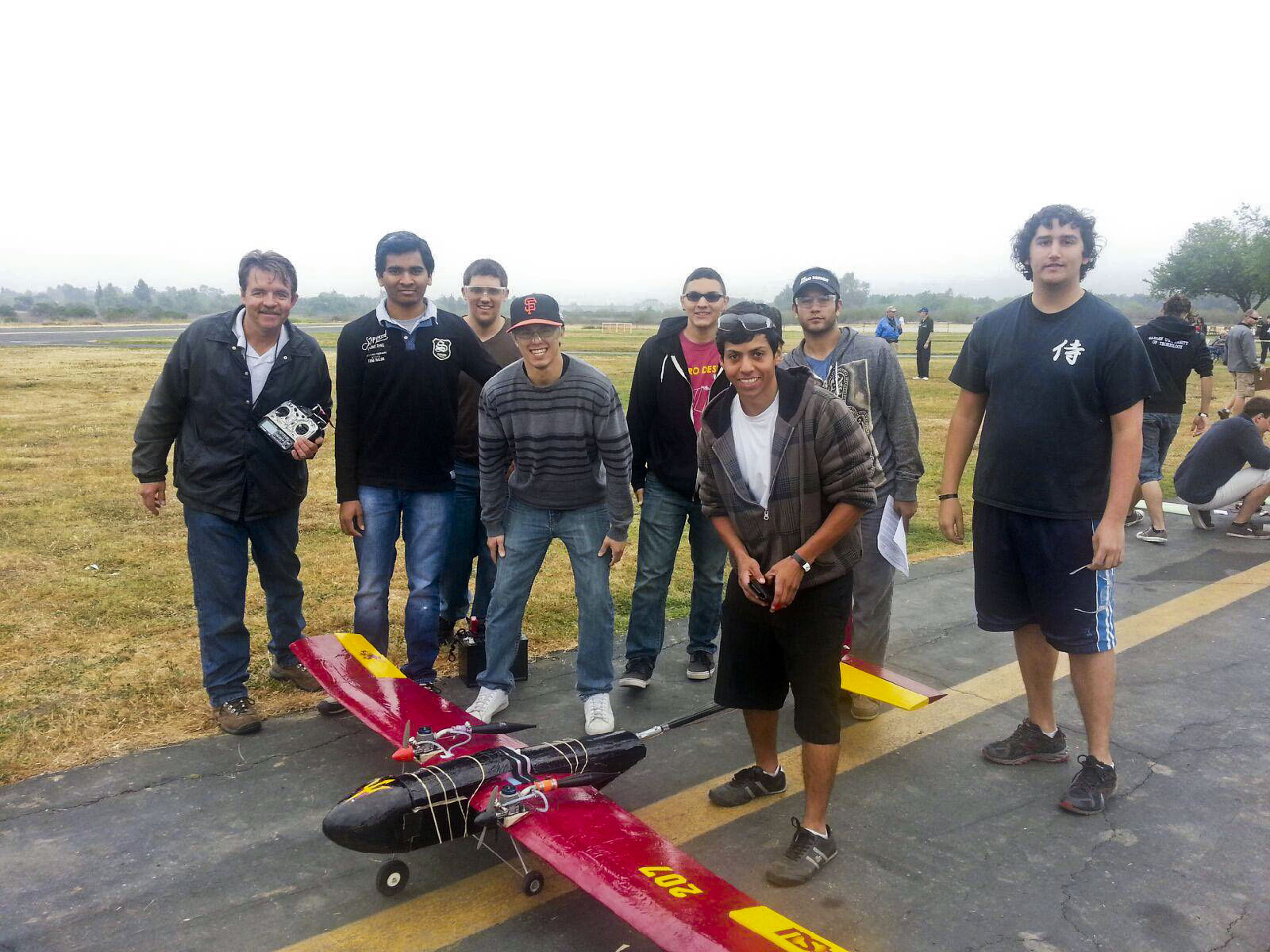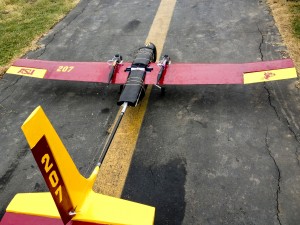
Hard work pays off in unexpected ways for the SAE@ASU Aero team

A team of engineering students at Arizona State University worked tirelessly to design and construct a remote-controlled airplane for flight in the recent Society of Automotive Engineers (SAE) Collegiate Design Series. These students are members of the SAE@ASU student organization making them part of an international association of more than 128,000 engineers in the aerospace, automotive and commercial-vehicle industries.
The SAE Collegiate Design Series consists of an East and West division each composed of 75 teams separated into three classes: Micro, Regular and Advanced. The SAE@ASU Aero team participated in the Advanced class against eight other competitors in the SAE Aero Design West competition from April 12-14 in Van Nuys, Calif.
The mission of the advanced class was to design a remote controlled aircraft that could carry a 15-pound load, fly to an altitude of at least 100 feet and drop a three-pound humanitarian package onto a target using either a telemetry (GPS) system or a first-person view system, says team captain Nicky Viloria, a recent graduate of the Ira A. Fulton Schools of Engineering. The aircraft was graded on a design report, a presentation and the overall flight score.
“Our team had to overcome many challenges this year,” says Viloria. The team started with all new members, none of whom had any previous experience in designing or building remote-controlled planes. They also lacked the design tools and documentation from previous SAE@ASU designs. “Basically we had to start with a ‘clean sheet’ design,” says Viloria.
“We learned almost exclusively from trial and error,” says another team member, Nick Jarrett, a sophomore studying aerospace engineering.
The design process took the longest time to complete, perhaps because the team decided to do a complete redesign just a week and a half before the competition. “The redesign is what I’m most proud of,” says Jarrett who slept 12 hours during the final six days before the competition. The aircraft was finished the morning of their departure to California after many of the team members pulled an all-nighter.
“After all the challenges we faced this semester, watching our plane take off for the first time the morning of the competition was one of the most exciting and memorable experiences I’ve ever had,” says Viloria.
Jarrett relates that four separate judges stopped by their table to tell them that their design was the most likely to successfully complete the competition. “Every other plane had huge cambered wings with very little engine power; they were designed to fly like gliders, generating a lot of lift with very little power. We were the only heavy-lift design team to fly with twin engines,” says Jarrett proudly.
Unfortunately, due to problems with the radio transmitter the plane lost the remote control’s signal during their second flight attempt at the competition and took a hard nose dive into the ground. The team deemed the plane not flight-worthy for the remainder of the competition despite attempts to fix the damaged plane.
Nonetheless, the SAE@ASU Aero team is honored for their conviction and determination in participating in this competition and successfully completing a project they were all proud of. “Knowing we designed a plane that flew well gave us a feeling of closure for the spring semester,” says Viloria.
“Before this project I had very little hands-on design experience and very little knowledge of the real-world applications of how an engineer was involved in the design and manufacture of an aircraft,” says Jarrett. “I had to work harder than I have ever worked before, combining things I learned in every class I have taken, from calculus to physics, solid mechanics to statics and dynamics. I used it all and realized how interrelated all of my engineering classes really are,” says Jarrett.
Many of the team members are already talking about next year’s competition and are eager to start another project with more experience and many lessons learned. This summer the team plans to rebuild their plane and to give each team member an opportunity to fly it. Keep your eyes out on campus.
The team members that traveled to the competition consisted of aerospace engineers Nicky Viloria, Stephen Baker, Gilbert Estrella, Nick Jarrett and Brian Walsh, and mechanical engineers Anandrao Biradar and Alex Salas. Other team members include Andrew Porras, a civil engineer, Jonathan Prost, a mechanical engineer, and aerospace engineers Pedro Marquez and Will Noonan.
The team was mentored by Timothy Takahashi, a professor of practice, and Fred Garrett, a faculty associate, both in the School for Engineering of Matter, Transport and Energy, one of the Ira A. Fulton Schools of Engineering at Arizona State University.
Learn more about SAE Aero and the other SAE@ASU teams at: http://sae.club.asu.edu/
Or contact the team captain Nicky Viloria at [email protected] if you are interested in joining the SAE Aero team.




































